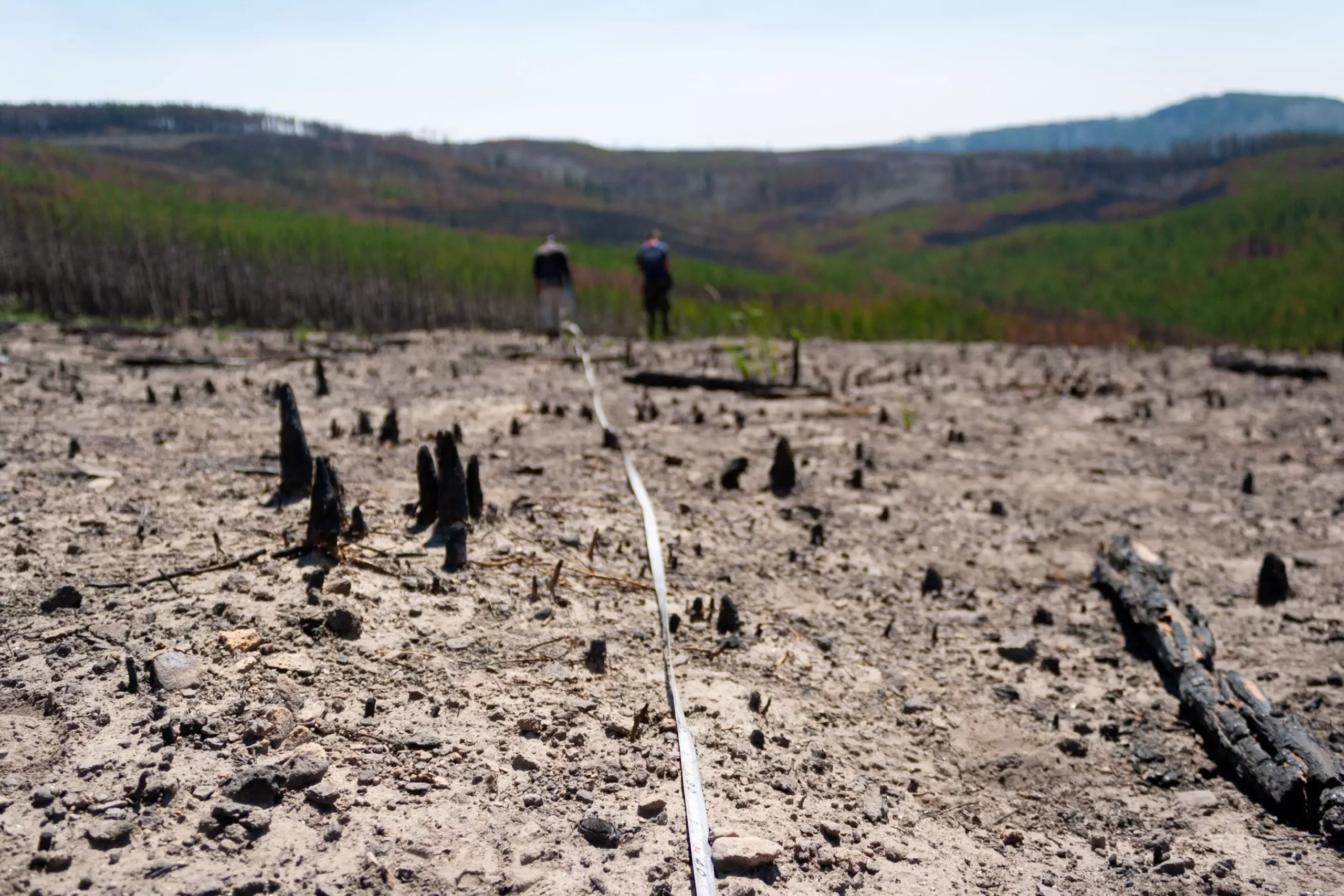Forests have long been heralded as vital players in the battle against climate change, primarily for their ability to capture and store carbon dioxide. As trees grow, they pull this greenhouse gas from the atmosphere, sequestering it in their trunks, branches, leaves, and roots. However, a recent study published in Earth’s Future unveils unsettling trends that challenge the effectiveness of many Western U.S. forests as reliable carbon sinks. This research raises fundamental questions about our reliance on forests as a “natural climate solution” and suggests that the narrative might be more complex than previously thought.
The study, spearheaded by forest ecologist Jazlynn Hall at the Cary Institute of Ecosystem Studies, scrutinizes carbon storage across the American West between 2005 and 2019. The findings indicate that, rather than enhancing carbon sequestration, many forests may be losing their carbon-storing capability due to the dual pressures of climate change and increased wildfire activity. Hall poignantly remarks on the potential repercussions, cautioning that the momentum behind using forests as a keystone in climate mitigation efforts may be misplaced.
Understanding the Baseline: The Study’s Approach
Hall’s team set out to establish a foundational understanding of the current state of carbon storage in Western forests. Employing extensive survey data from the U.S. Forest Service, the researchers delved into 19 distinct ecoregions, each representing varying climatic conditions—from the parched landscapes of the Southwest to the lush environments of the Pacific Northwest. By utilizing sophisticated machine learning algorithms, they were able to isolate driving factors for the observed trends, analyzing influences such as human intervention, wildfire occurrences, and regional climate variables.
The outcome revealed a troubling decline in carbon stored in living trees across a significant portion of the Western U.S., a stark contrast to the increase in carbon found in dead trees and forest debris. This shift points to the concerning reality that while dead carbon might rise, it does not contribute effectively to long-term storage since it is ultimately released back into the atmosphere through processes of decomposition or combustion during wildfires.
Climate Change: The Underlying Catalyst
Both climate variability and fire were identified as substantial forces undermining forest carbon storage. For eight out of the 19 ecoregions, climate variables—including precipitation levels, temperatures, and humidity—emerged as pivotal factors affecting carbon dynamics. Furthermore, fire events were highlighted as critical drivers in two-thirds of ecoregions analyzed, raising alarm about the role of extreme weather and fire frequency in an era of global warming.
One of the more disturbing revelations is that current carbon storage levels might be artificially high due to a long history of aggressive fire suppression tactics. Such management has allowed fuel loads to accumulate, leading to increasingly severe wildfire events—questioning the sustainability of our previous approaches to forest management.
Hope Amid Challenges: The Pacific Northwest’s Resilience
Interestingly, the study shines a light on the Pacific Northwest, an anomaly in the otherwise worrying trend of declining carbon storage. This ecoregion showed signs of resilience with increases in carbon storage, attributed to significant conservation efforts, including reductions in old-growth logging and the expansion of protected forest areas. This lends credence to the idea that proactive management and policy changes can yield positive outcomes, especially in regions where human influence has been focused on preservation rather than exploitation.
Jazlynn Hall emphasized this point, expressing that while the broader trends are alarming, there are areas where concerted efforts can pivot the trajectory toward more sustainable carbon storage practices. This realization, though encouraging, should be tempered by the acknowledgment that ongoing efforts must be maintained and enhanced to combat the overwhelming pressures of climate change.
The Road Ahead: Moving Beyond Traditional Models
Despite the discouraging trends identified in the study, key researchers urge for a shift in how we perceive and manage our forests. Winslow Hansen, one of the study’s senior authors, underscores the need for immediate investment in proactive forest management strategies, such as thinning and prescribed burning. These methods could mitigate the risk of catastrophic wildfires while stabilizing carbon storage capacities in vulnerable forest ecosystems.
Ultimately, the mounting data signals that forests are facing unprecedented challenges that threaten their role as carbon sinks. Hansen’s ongoing research with the Western Fire and Forest Resilience Collaborative aims to establish a real-time framework for tracking changes in forest carbon dynamics, ensuring that future management strategies are informed and adaptive.
As we grapple with the urgent realities of the climate emergency, the scientific insights from this research pave the way for a more nuanced understanding of forest ecosystems. It compels us to reevaluate our strategies and find pathways that empower these natural allies to fulfill their critical role in absorbing carbon, rather than be passive bystanders in the escalating climate crisis.


Leave a Reply